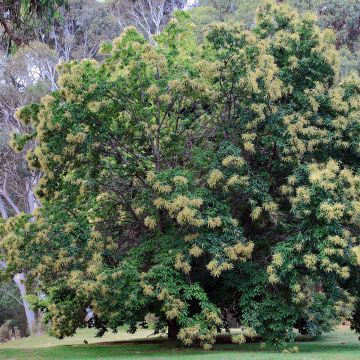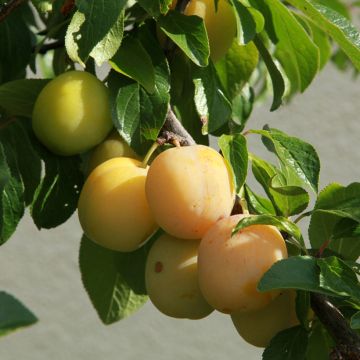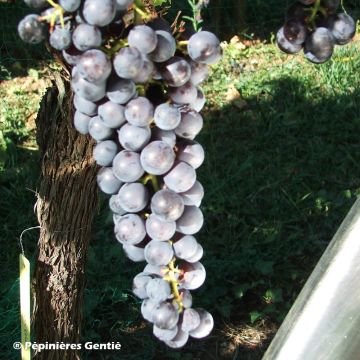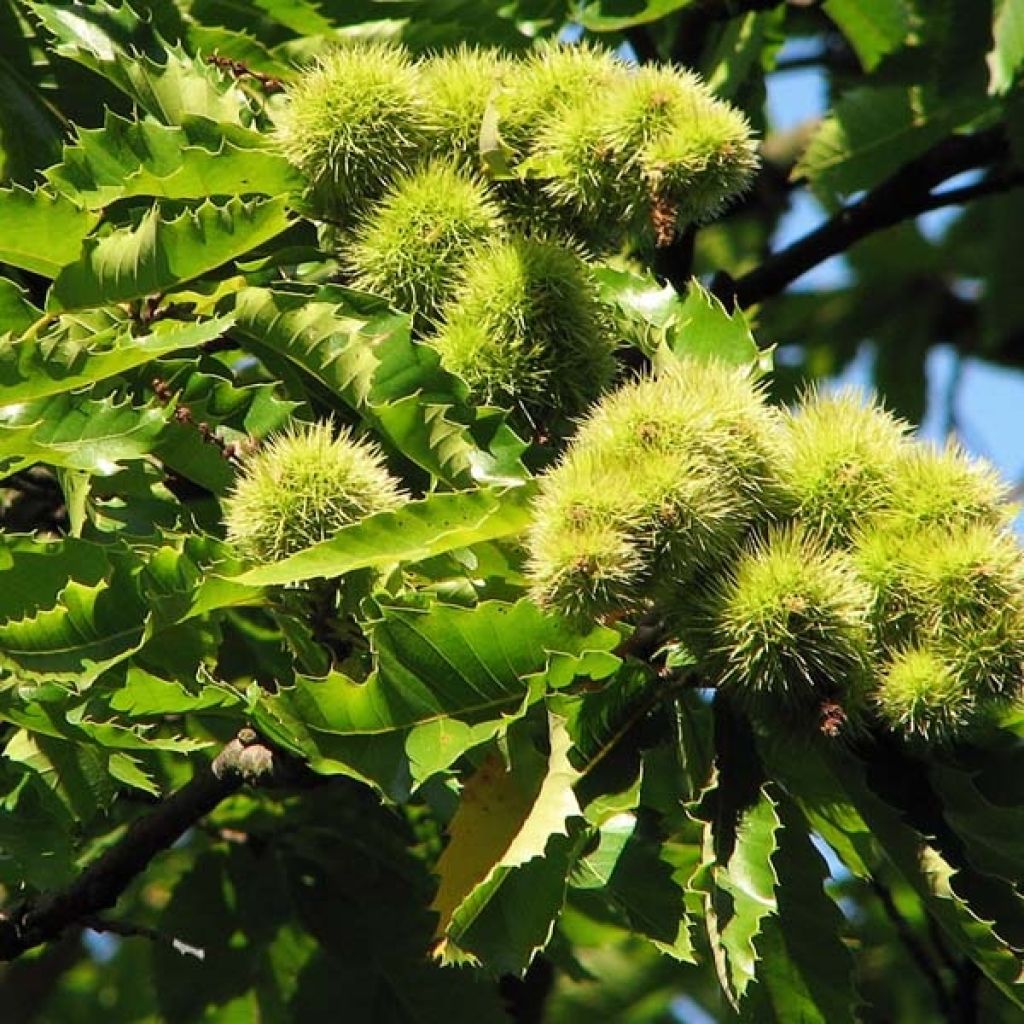

Chestnut Marron de Lyon - Castanea sativa
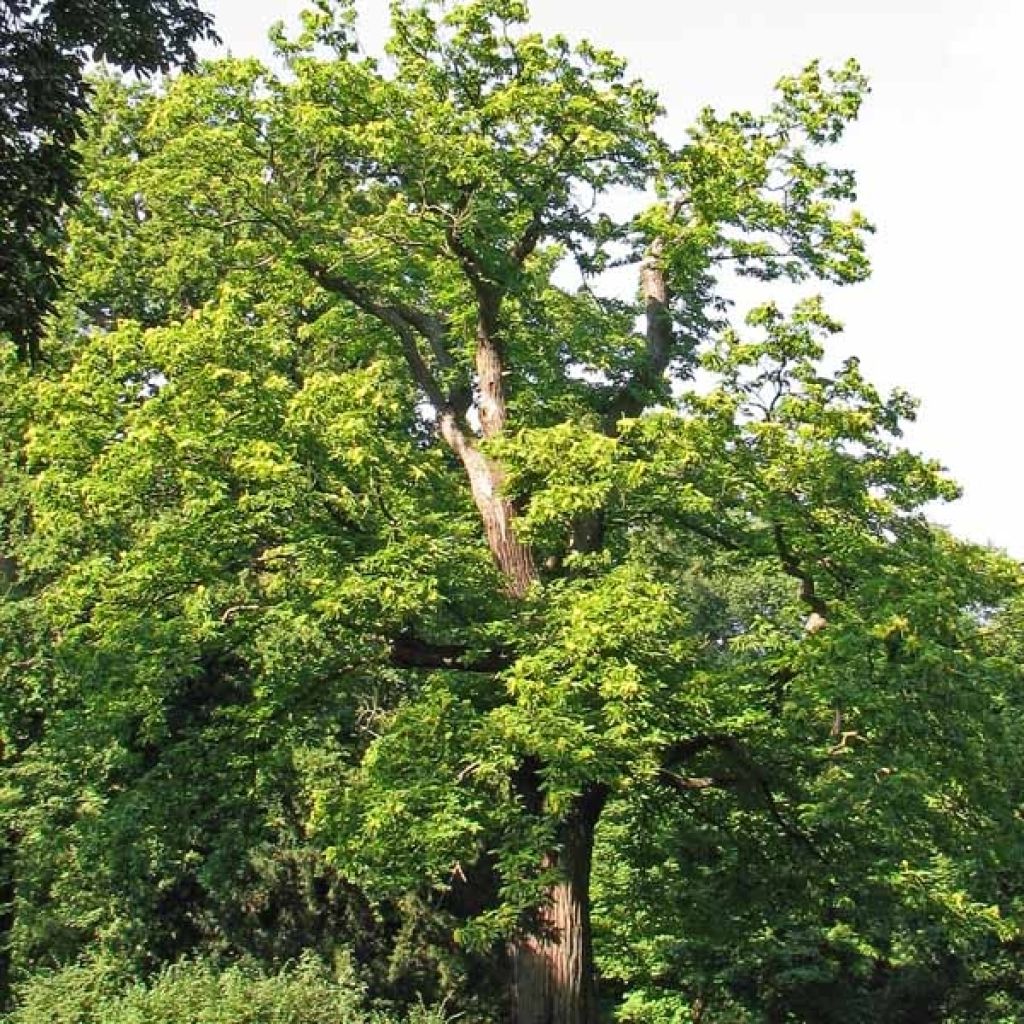

Chestnut Marron de Lyon - Castanea sativa
Chestnut Marron de Lyon - Castanea sativa
Castanea sativa Marron de Lyon
Sweet Chestnut, Spanish Chestnut
Quel est la taille de l'arbre vendu s'il vous plaît ? Merci
Arnaud Hr, 22/10/2022
This plant carries a 6 months recovery warranty
More information
We guarantee the quality of our plants for a full growing cycle, and will replace at our expense any plant that fails to recover under normal climatic and planting conditions.
Oversize package: home delivery by special carrier from €6.90 per order..
Express home delivery from €8.90.

Description
The 'Marron de Lyon' Chestnut Tree, also known as Castanea sativa, is a large self-fertile fruit tree that produces edible chestnuts in October. The chestnuts are a shiny reddish-brown colour and have a floury, sweet flesh. They are often roasted in the fireplace and used in many traditional recipes during the festive season. This majestic tree has a fragrant melliferous flowering. Make sure you have slightly acidic, deep, and well-drained soil.
The common chestnut belongs to the Fagaceae family and is native to southern Europe and the Mediterranean region. The 'Marron de Lyon' Chestnut Tree is a variety originating from Ampuis in the Rhône region. It can reach a height of up to 30 metres (98 feet) and is therefore suitable for large spaces. It provides a beautiful shade in summer. The flowering consists of long male aments and very discreet female flowers that bloom separately. This variety is self-fertile, but the presence of other trees allows for cross-pollination and increases the yield. It is a sought-after species because its wood is weather-resistant and does not require treatment. The 'Marron de Lyon' Chestnut Tree has an impressive longevity. In France, there are specimens that are likely over 1000 years old. The chestnuts are found inside very spiky husks that fall to the ground when ripe. This variety is mainly cultivated for its large, tender, and sweet fleshed fruits. Do not confuse the Chestnut Tree with the Horse Chestnut, as the chestnuts of the latter are not edible!
The Marron de Lyon Chestnut Tree requires space, very deep soil, and above all, non-calcareous soil, even slightly acidic, with a pH between 6 and 6.5 being ideal. It is very hardy but not suitable for high mountain areas.
Report an error about the product description
Chestnut Marron de Lyon - Castanea sativa in pictures


Plant habit
Fruit
Flowering
Foliage
Botanical data
Castanea
sativa
Marron de Lyon
Fagaceae
Sweet Chestnut, Spanish Chestnut
Cultivar or hybrid
Other Chestnut trees
Planting and care
Plant the 'Marron de Lyon' Chestnut Tree (Castanea sativa) in a deep and slightly acidic soil, definitely not limestone. The planting hole should be much wider than the subject you are planting. Choose the location carefully as the chestnut tree dislikes being transplanted. Do not bury the base of the trunk. Water it generously at the beginning to promote establishment. Pruning should be light, but to be able to pass underneath when it is fully grown, remove the lower branches gradually. Avoid pruning branches that are too thick. Harvest takes place in October, split the fallen burrs on the ground by tapping them with a stick or open them with very thick gloves to extract the chestnuts. These fresh fruits are perfect for making chestnut cream, but they can be stored all winter in a dry and well-ventilated place.
Planting period
Intended location
Care
-
, onOrder confirmed
Reply from on Promesse de fleurs
Ancient and local varieties
Haven't found what you were looking for?
Hardiness is the lowest winter temperature a plant can endure without suffering serious damage or even dying. However, hardiness is affected by location (a sheltered area, such as a patio), protection (winter cover) and soil type (hardiness is improved by well-drained soil).

Photo Sharing Terms & Conditions
In order to encourage gardeners to interact and share their experiences, Promesse de fleurs offers various media enabling content to be uploaded onto its Site - in particular via the ‘Photo sharing’ module.
The User agrees to refrain from:
- Posting any content that is illegal, prejudicial, insulting, racist, inciteful to hatred, revisionist, contrary to public decency, that infringes on privacy or on the privacy rights of third parties, in particular the publicity rights of persons and goods, intellectual property rights, or the right to privacy.
- Submitting content on behalf of a third party;
- Impersonate the identity of a third party and/or publish any personal information about a third party;
In general, the User undertakes to refrain from any unethical behaviour.
All Content (in particular text, comments, files, images, photos, videos, creative works, etc.), which may be subject to property or intellectual property rights, image or other private rights, shall remain the property of the User, subject to the limited rights granted by the terms of the licence granted by Promesse de fleurs as stated below. Users are at liberty to publish or not to publish such Content on the Site, notably via the ‘Photo Sharing’ facility, and accept that this Content shall be made public and freely accessible, notably on the Internet.
Users further acknowledge, undertake to have ,and guarantee that they hold all necessary rights and permissions to publish such material on the Site, in particular with regard to the legislation in force pertaining to any privacy, property, intellectual property, image, or contractual rights, or rights of any other nature. By publishing such Content on the Site, Users acknowledge accepting full liability as publishers of the Content within the meaning of the law, and grant Promesse de fleurs, free of charge, an inclusive, worldwide licence for the said Content for the entire duration of its publication, including all reproduction, representation, up/downloading, displaying, performing, transmission, and storage rights.
Users also grant permission for their name to be linked to the Content and accept that this link may not always be made available.
By engaging in posting material, Users consent to their Content becoming automatically accessible on the Internet, in particular on other sites and/or blogs and/or web pages of the Promesse de fleurs site, including in particular social pages and the Promesse de fleurs catalogue.
Users may secure the removal of entrusted content free of charge by issuing a simple request via our contact form.
The flowering period indicated on our website applies to countries and regions located in USDA zone 8 (France, the United Kingdom, Ireland, the Netherlands, etc.)
It will vary according to where you live:
- In zones 9 to 10 (Italy, Spain, Greece, etc.), flowering will occur about 2 to 4 weeks earlier.
- In zones 6 to 7 (Germany, Poland, Slovenia, and lower mountainous regions), flowering will be delayed by 2 to 3 weeks.
- In zone 5 (Central Europe, Scandinavia), blooming will be delayed by 3 to 5 weeks.
In temperate climates, pruning of spring-flowering shrubs (forsythia, spireas, etc.) should be done just after flowering.
Pruning of summer-flowering shrubs (Indian Lilac, Perovskia, etc.) can be done in winter or spring.
In cold regions as well as with frost-sensitive plants, avoid pruning too early when severe frosts may still occur.
The planting period indicated on our website applies to countries and regions located in USDA zone 8 (France, United Kingdom, Ireland, Netherlands).
It will vary according to where you live:
- In Mediterranean zones (Marseille, Madrid, Milan, etc.), autumn and winter are the best planting periods.
- In continental zones (Strasbourg, Munich, Vienna, etc.), delay planting by 2 to 3 weeks in spring and bring it forward by 2 to 4 weeks in autumn.
- In mountainous regions (the Alps, Pyrenees, Carpathians, etc.), it is best to plant in late spring (May-June) or late summer (August-September).
The harvesting period indicated on our website applies to countries and regions in USDA zone 8 (France, England, Ireland, the Netherlands).
In colder areas (Scandinavia, Poland, Austria...) fruit and vegetable harvests are likely to be delayed by 3-4 weeks.
In warmer areas (Italy, Spain, Greece, etc.), harvesting will probably take place earlier, depending on weather conditions.
The sowing periods indicated on our website apply to countries and regions within USDA Zone 8 (France, UK, Ireland, Netherlands).
In colder areas (Scandinavia, Poland, Austria...), delay any outdoor sowing by 3-4 weeks, or sow under glass.
In warmer climes (Italy, Spain, Greece, etc.), bring outdoor sowing forward by a few weeks.


































